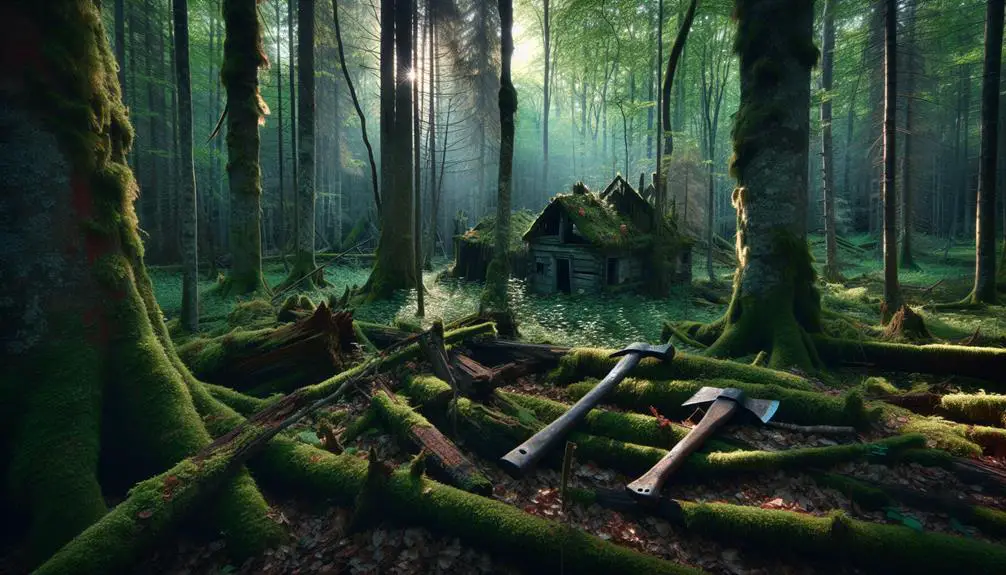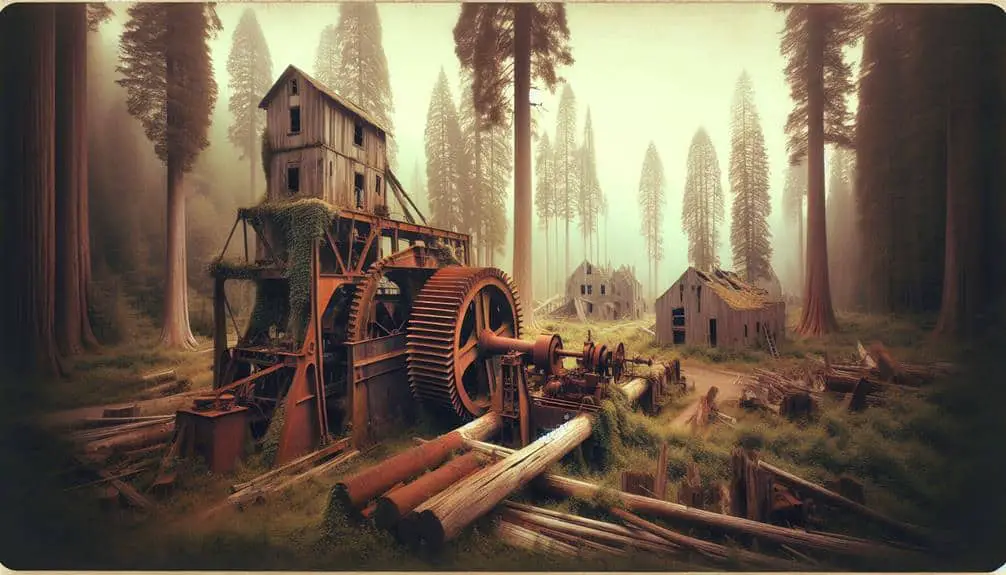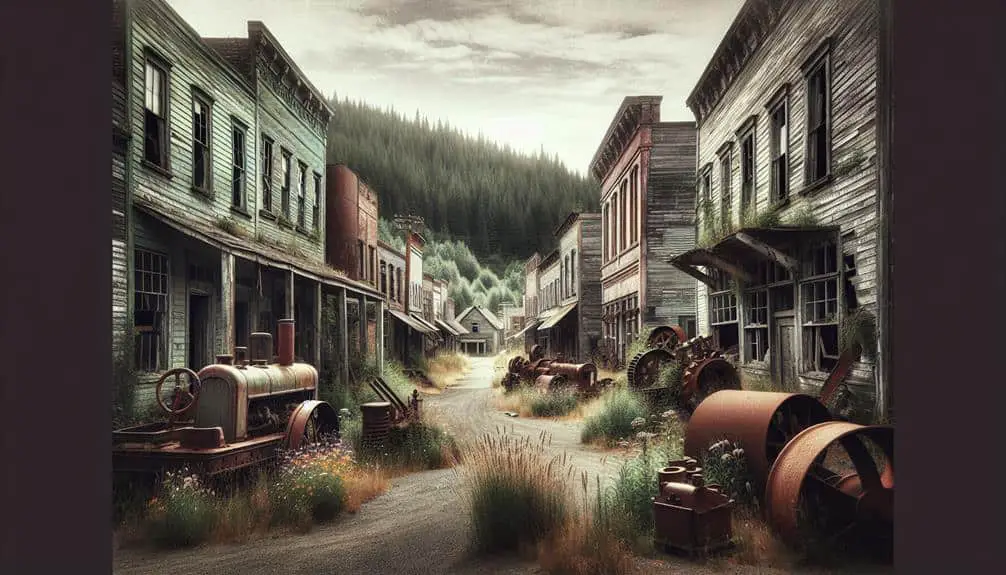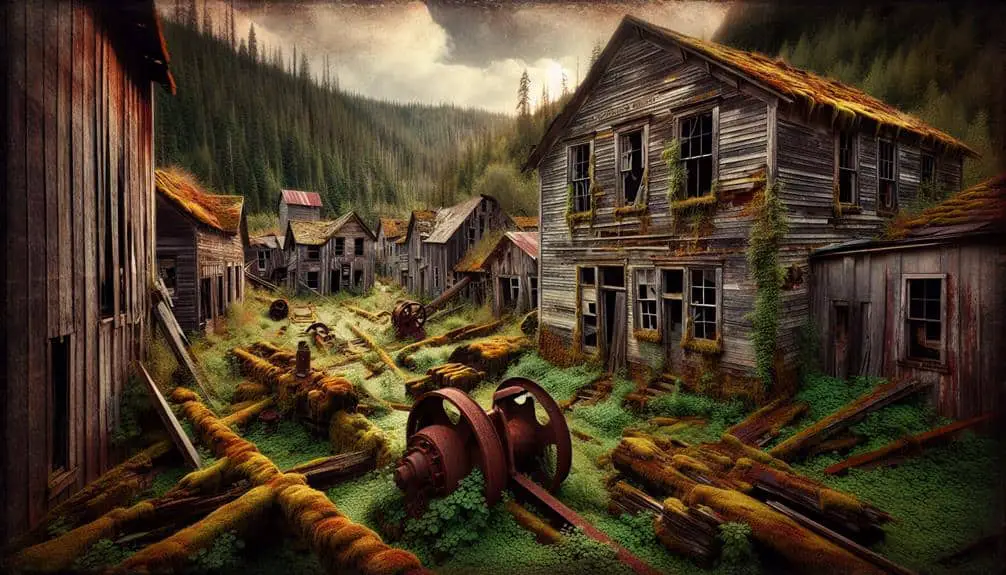To revive forgotten lumberjack towns, start by evaluating infrastructure to enhance connectivity and utility accessibility. Engage the community by hosting meetings and involving locals in revitalization plans. Secure funds through grants, partnerships, and fundraising for restoration projects. Develop sustainable tourism initiatives that promote eco-friendly activities and cultural events. Preserve historical significance by maintaining buildings, organizing heritage celebrations, and offering educational programs. Implementing these tips can breathe new life into these historic sites, ensuring a vibrant future.
Key Points
- Assess current infrastructure for repairs and improvements.
- Engage community in revitalization vision and planning.
- Secure funding through grants, partnerships, and events.
- Develop sustainable tourism initiatives with local input.
- Preserve historical significance through restoration and events.
Assessing Current Infrastructure
To begin revitalizing forgotten lumberjack towns, it's essential to thoroughly assess the current state of their infrastructure, identifying key areas for improvement and development. Infrastructure evaluation plays a critical role in understanding the foundations necessary for future planning. Start by examining the roads connecting these towns; are they in disrepair, hindering access to essential services? Assess the condition of bridges essential for transportation and confirm they can bear the weight of modern vehicles. Evaluate the availability of utilities like water and electricity, necessary for sustaining a growing community.
Future planning hinges on this initial assessment. Identify areas where infrastructure enhancements can attract new businesses and residents. Perhaps investing in high-speed internet infrastructure could draw in digital nomads seeking a quiet, rustic lifestyle. Upgrading public spaces like parks and community centers can create a more inviting environment for both current residents and potential newcomers. By strategically planning for the future while addressing current infrastructure needs, these forgotten towns can blossom once again.
Engaging Local Community Support
Engage the local community to foster support and momentum for revitalizing forgotten lumberjack towns. Community involvement is essential in breathing new life into these historic areas. Start by organizing town hall meetings or community workshops to discuss the vision for the town's revival. Encourage residents to share their ideas, concerns, and suggestions. Building a sense of ownership among community members will help create a shared goal and commitment towards revitalization.
Volunteer recruitment plays a key role in executing revitalization plans. Reach out to local schools, churches, and community centers to spread the word about volunteer opportunities. Consider creating a volunteer database to efficiently match skills and interests with specific projects. Hosting volunteer appreciation events can also help in building a sense of camaraderie and recognition among volunteers.
Securing Funding for Restoration Projects
Securing funding for restoration projects in forgotten lumberjack towns requires strategic planning and proactive outreach to potential donors and grant-making organizations. To kickstart this process, research available grant opportunities that specifically cater to historical preservation or community revitalization projects. Many grants are offered by government agencies, foundations, and private corporations looking to support initiatives that align with their values.
Establishing strong community partnerships is another essential step in securing funding. Collaborating with local businesses, organizations, and residents can't only provide financial support but also create a network of advocates for your restoration projects.
When approaching potential donors, clearly outline the impact of the restoration on the town's economy, history, and community well-being. Emphasize the value of preserving these towns for future generations and highlight how their contribution can make a tangible difference. Additionally, consider hosting fundraising events or campaigns to engage the broader community in supporting the cause.
Developing Sustainable Tourism Initiatives
In developing sustainable tourism initiatives for forgotten lumberjack towns, focus on creating experiences that showcase the rich history and natural beauty of these unique destinations. To guarantee economic growth and cultural preservation, consider the following:
- Community Involvement: Engage local residents in the planning and execution of tourism initiatives. Their knowledge and passion can enhance visitor experiences while fostering a sense of pride and ownership within the community.
- Ecotourism Opportunities: Highlight the environmental significance of the area by offering eco-friendly activities such as guided nature walks, birdwatching tours, or sustainable forestry workshops. This not only preserves the natural beauty of the region but also educates visitors on the importance of conservation.
- Heritage Events: Organize cultural festivals, historical reenactments, or traditional craft workshops to celebrate the town's lumberjack heritage. These events can attract tourists interested in experiencing the authentic culture of the region while supporting local artisans and businesses.
Preserving Historical Significance
Preservation of the historical legacy in forgotten lumberjack towns requires a strategic blend of conservation efforts and community engagement. Maintaining authenticity is crucial in guaranteeing that the unique cultural heritage of these towns is preserved for future generations. To achieve this, it's essential to carefully restore and maintain historical buildings, artifacts, and landmarks that hold significance in the town's history.
Cultural preservation plays an important role in honoring the traditions and stories of the past lumberjack communities. Encouraging local residents to share their knowledge and memories can help in capturing the essence of what made these towns special. By organizing events that celebrate the town's history, such as lumberjack festivals or historical tours, the community can actively participate in preserving its heritage.
Incorporating educational programs for both residents and visitors can further deepen the appreciation for the historical significance of these towns. By fostering a sense of pride and connection to the past, these efforts can ensure that the legacy of lumberjack towns continues to thrive.
Frequently Asked Questions
When managing conflicts between history and progress in lumberjack towns, you must balance preservation and modernization. Embrace historical accuracy while implementing infrastructure updates sensitively. Respect the past while building a sustainable future for these unique communities.
What Strategies Can Be Used to Attract Younger Generations to Participate in Revitalizing Forgotten Lumberjack Towns?
To attract millennials to revitalize forgotten lumberjack towns, focus on community engagement. Encourage participation in historical preservation, modernize amenities, offer outdoor recreational opportunities, host events that blend tradition with innovation, and create a welcoming environment for newcomers.
Are There Any Specific Regulations or Restrictions That Need to Be Considered When Securing Funding for Restoration Projects in These Towns?
When securing funding for restoration projects, be mindful of regulations and restrictions. They can impact the process and outcomes greatly. Understanding these rules is crucial to make certain that your restoration efforts are successful.
How Can Sustainable Tourism Initiatives Be Integrated Into the Local Economy Without Compromising the Town's Unique Cultural Heritage?
To integrate sustainable tourism into the local economy without compromising cultural heritage, focus on eco-tourism initiatives like guided nature walks. Offer cultural workshops showcasing traditions. Encourage visitors to respect and support the town's unique heritage for long-term growth.
What Measures Can Be Taken to Ensure That the Stories and Contributions of Marginalized Groups, Such as Indigenous Peoples or Migrant Workers, Are Accurately Represented in the Preservation Efforts of These Towns?
To guarantee accurate representation in town preservation, actively seek out and amplify indigenous voices and migrant workers' stories. Listen, learn, and collaborate with these marginalized groups to authentically honor their contributions and histories.



